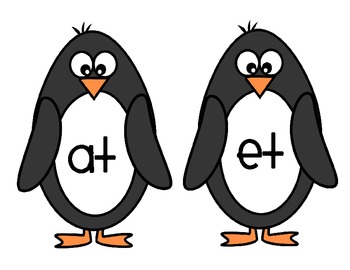It's a Penguin Party!!
Thank you Mother Nature. All the freezing temperatures and snow we've had lately has made my unit on Arctic Animals so much more fun! The children and I have spent the last two weeks studying penguins; the adorable flightless birds. The class sang songs, read poems, and watched live streaming videos of penguins. They also learned some very big vocabulary words: rookery, blubber, regurgitate, and molt. Every year regurgitate is always the new favorite word to use after I teach this unit. LOL!
DAILY 5 CENTERS
Listening
At listening center the children listened to two penguin stories. After listening to each, the children had to make a text-to-self connection and write about it. In the story If You Were a Penguin we learn some amusing facts about penguins. The children identified with one activity and wrote about it. In Tacky the Penguin, Tacky is an odd bird who makes lots of mistakes. The children had to write about a time they made a mistake. I'm sure I don't have to tell you that some of their responses were quite amusing.
Reading/Writing
The theme across our reading and writing centers was penguins of course. The children used the song (poem) I'm a Little Penguin to practice their fluency and expression. Then they took all the information they learned from reading about penguins to write about what they would do if they were a penguin. One student wrote that he would be a good daddy penguin and take care of his egg. Go ahead, say it... Awwww!
Word Work
The children were able to read and sort CVC words into their perspective word families. Most students sorted CVC fish into three word families (-at, -et, -an), while a smaller group sorted CVC penguins into six word families. I am so proud of how much progress the children are making using their decoding skills.
WRITER'S WORKSHOP
Having spent a good portion of the last two weeks gathering information and interesting facts about penguins, it was time to write our own All About Penguins books. After looking at many non-fiction books and identifying their parts (cover, table of contents, glossary), we began filling in all the pertinent information to make our books unique yet informative. The children did an AMAZING job!!
MATH
In math we recently finished our unit on recognizing and writing numbers up to 20. We took it one step further and are able to write number sentences for each number as well. I find that identifying 10 using a 10 frame is much easier than recognizing 10 using cubes or another manipulative. So in the classroom I like to use 10 frames to help us identify groups of tens first and then count how many more we have. For instance: 15 is 1 group of 10 plus 5 more or 10 + 5 = 15. The children are becoming more proficient using and writing number sentences.
SCIENCE
To end our unit on penguins and begin our study of walruses, we did the blubber glove experiment. What a fun way to answer the question, "Why don't penguins or other Arctic animals get cold?" The children really got a sense of just how long an Arctic animal could stay in the icy cold waters without getting cold by having a thick layer of blubber (fat). No big bulky jackets needed for them.
CULMINATING ACTIVITY
We saved the best activity for last! All the kindergarten classes gathered together to watch Happy Feet as a culminating activity to our penguins unit. The complimentary goldfish were an added bonus. Waddle on!!














No comments:
Post a Comment